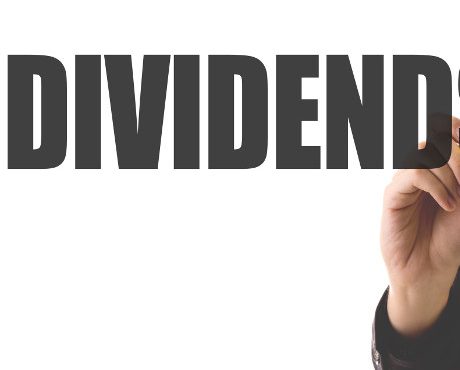Spotting Great Dividend Stocks
Today’s Income Investors post will look a little unusual.
While we normally feature essays, today you’ll find an interview with site Editor-In-Chief Robert Baillieul. Last week, we did a quick question-and-answer session on investing, financial markets, and spotting great dividend stocks.
You can read the transcript of our conversation below. It has been lightly edited for clarity.
JING PAN: How did you get started investing?
ROBERT BAILLIEUL: My grandfather had the secret to stock picking.
Years ago, he pulled out a dividend check from a well-known company. As he explained, the company was paying him more in distributions than what he coughed up for the stock.
This man had no business education. My grandfather couldn’t tell you the difference between EBITDA and cash flow. But by just buying and holding shares in a wonderful business, he created a massive stream of retirement income.
Thing is, he’s a classic example of how normal folks make money in the stock market. They don’t check their quotes each hour. They don’t call up their broker every day. They don’t cruise cocktail parties for hot tips. Rather, they buy a few wonderful businesses, stick the certificates in a drawer, and collect the dividend checks.
JING PAN: How would you describe your investment approach?
ROBERT BAILLIEUL: I want to own simple businesses that pay out growing dividends.
Everyone loves the “sexy” growth stories. They grab all the airtime in the media. And while a few, in fact, shoot the lights out, most hot names disappoint or go bust.
Nobody covers simple businesses that pay out regular distributions. But by compounding a modest return over a long period of time, you build a huge stream of dividends. And because these income names get overlooked, they often deliver better returns.
For proof, I like to point to a recent study by Ned Davis Research, Inc. Between 1972 and 2016, a $100.00 investment in a portfolio of boring dividend growth stocks grew to $6,973. By comparison, the same investment in the S&P 500 Equal Weight Index grew to only $2,628. An investment in non-dividend-paying stocks (the ones the media always talk about) grew to only $289.00. Which would you rather own?
JING PAN: What do you look for in a dividend stock?
ROBERT BAILLIEUL: I often talk about a handful of factors I call my “Three M’s:” the moat, the management, and the money.
First, I look at what Warren Buffett calls a “moat.” As he often describes it in his shareholder letters, a great business resembles a castle. And in capitalism, rivals will always try to siege your profits. To survive, you need to have a wide moat (some sort of competitive advantage) around your business.
Second, I look for great management teams. Executives decide where to invest our cash. These decisions have a big impact on a company’s success. For this reason, the quality of your management team can have the largest impact on your long-term returns.
Finally, I look at the money. I want to see growing dividends. I want to pay a reasonable price for this stream of income. I can’t think of a better way to spot great businesses than a long track record of rewarding shareholders.
Of course, you could call these points just common sense. If you buy wonderful businesses with great management teams and growing dividends, you’ll do pretty well over the long haul. You don’t need an MBA to figure that out.
JING PAN: What about getting rich quick on technology stocks?
ROBERT BAILLIEUL: Let me confess my woeful track record on tech.
Facebook, Inc (NASDAQ:FB)? I called it a fad. Amazon.com, Inc. (NASDAQ:AMZN)? I said it had no future. Microsoft Corporation’s (NASDAQ:MSFT) “Zune?” I thought it looked promising.
When it comes to gadgets and gizmos, I suffer from some sort of reverse Midas touch. For that reason, I’ll stick to my plain Jane dividend stocks. Slow and steady seems to work best for me.
JING PAN: Could you give an example of the type of businesses you look for?
ROBERT BAILLIEUL: The Clorox Company (NYSE:CLX) tops my list of dividend stocks.
“Boring” products like cleaning supplies always have steady demand. And because the business has established itself as a trusted brand, it would be tough for rivals to break into the industry.
Behind the scenes, management has quietly made shareholders a fortune. Executives have built an impressive portfolio of household brands over the year, including “Glad” trash bags, “Brita” water filters, and “Hidden Valley” salad dressing. This has turned the company into a slow-and-steady growth machine, with sales now topping $6.0 billion each year.
Most of this money gets passed on to shareholders. Clorox has delivered 40 consecutive years of distribution hikes, earning itself a place on the elite list of “dividend aristocrats.” Shares, needless to say, have posted large capital gains over that period too.
I love these simple businesses. No, they don’t snag many magazine covers. They don’t have much flash. But for their loyal shareholders, that doesn’t seem to matter.
JING PAN: Thanks for taking the time for this today Rob.
ROBERT BAILLIEUL: No problem. You’re welcome.
